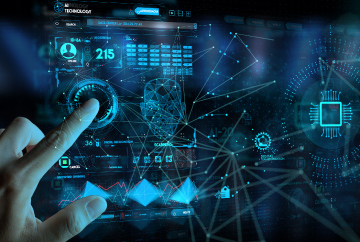The high-tech businesses that power the modern economy are experiencing profound changes in their business models and operations as the wave of digitalization is transforming and modernizing the marketplace. These high-tech industries have yet to update their enterprises. To meet rising demands and achieve organizational goals in the era of modernizing the core, high-tech firms must rebuild their foundation to enable new business models, market entries, and product introductions.
As a reactive response to COVID-19 and evolving market conditions, these organizations have shifted from legacy technical environments to modernized systems. Yet, adopting their business models to augment more resilient operations, working agility, and cutting-edge capabilities remains an operational challenge.
Future Perspectives
Enterprise modernization can mean the difference between business resilience and operational failure. It is a process that involves changing a business model, technology framework, data architecture, and operating models to adapt to new competitive environments. The transformation aims to create an enterprise-wide digital platform that enables customers to access products and services through multiple channels at any time, meeting their needs wherever they are.
Businesses must understand that as their existing infrastructure transforms, there might be gaps in capabilities or skill sets within their organization that need to be bridged to explore business opportunities. Two crucial factors can help businesses derive growth through enterprise modernization:
ERP Modernization and a Refreshing Technology Stack
Organizations with legacy ERP face significant risks that lead to lower productivity, decreased efficiency, and missed opportunities. Over the past few years, enterprise modernization has become a key element of business strategy for organizations to take advantage of new technology and enhance their performance. At its core, it is about embedding automation processes in business frameworks to free up resources for expansion. A modernized ERP supported by the cloud can optimize business models to improve operations and accelerate growth for high-tech firms.
While the evolving marketplace demands organizations adapt to the new normal, organizations are shifting towards sustainable technology infrastructure to increase business potential. A refreshed technology stack can assist high-tech businesses to enter new markets in different geographic locations, increase scalability and expansion, incubate new features for clients, and eliminate deprecated legacy platforms that are a roadblock for development.
Reforming Talent Acquisitions, Retention, and Augmenting Skill Sets
As businesses strive to survive market shifts and combat growing competition, reformed talent acquisitions and workforce skills play a critical function in driving transformational roles in the enterprise. As a result, managing talent and developing human resources to match operational abilities remains a top challenge for organizations. While speculations suggest that automation will lead most peripheral activities to scout and select talent, it remains crucial for leadership and stakeholders to transform human resources into strategic business resources to synthesize growth.
Economic shockwaves post-covid have impacted high-tech businesses to re-evaluate skill gaps in their enterprises to bridge them through automation, workforce augmentation, data-driven workflows, and AI-powered solutions to propel operational agility and resilience to succeed.
Enterprise Modernization Essentials for High-Tech Businesses
Leveraging Modern ERP to Unlock Automation
A modern ERP can assist in efficient data management compared to legacy systems, which brings greater visibility to operational processes with analytics. Better data handling unlocks automation potential across enterprises through IT/OT integrations. Advanced ERP helps build a digital core that heightens agility, supports real-time decision-making, and fuels robust omnichannel experiences to explore new marketplaces. High-tech businesses can build data-powered enterprises through bold big-data strategies and AI/ML solutions to make navigation easier for growth and transformation.


